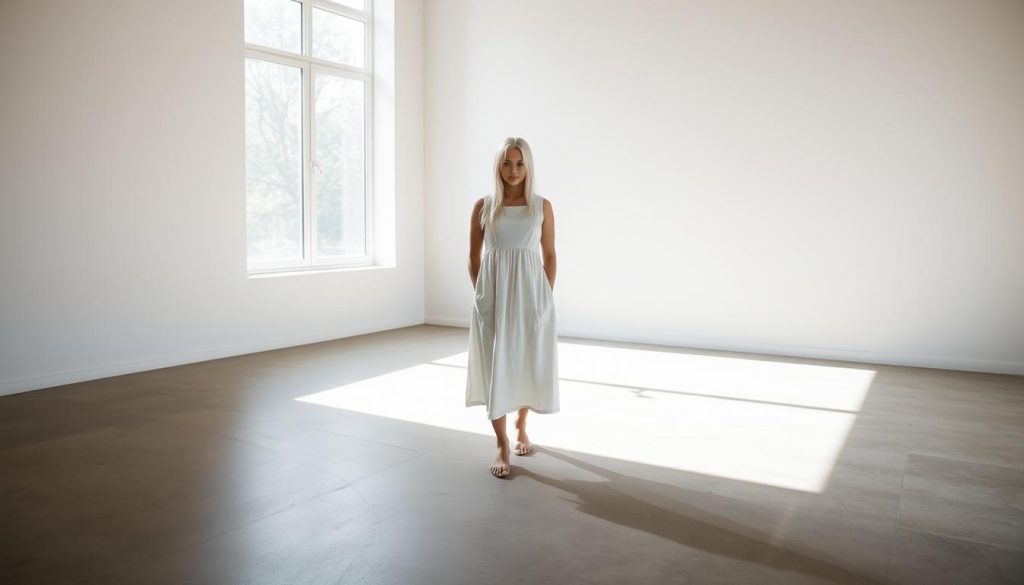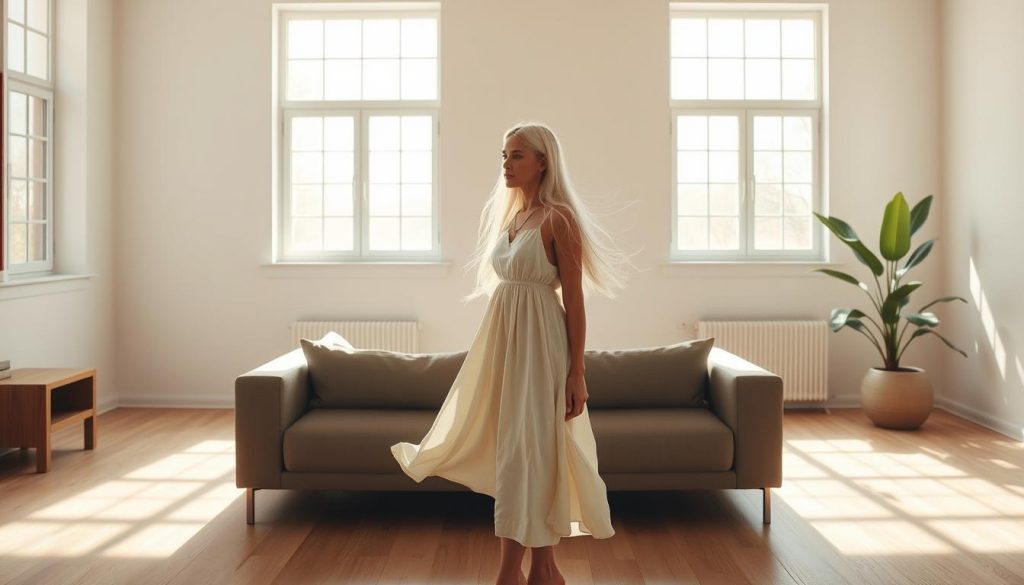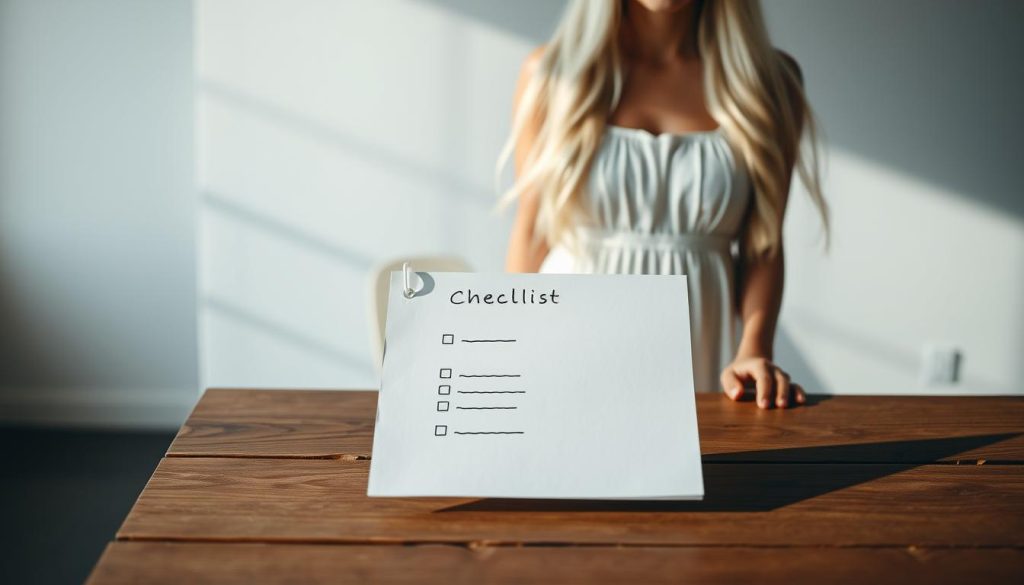Makes Minimalism Last Have you ever wondered why a weekend purge feels great but rarely sticks? You’re not alone! This article puts the focus on what actually makes change last in real life.
I’ll show you a simple mindset that supports your goals, habits, and happiness over time. Think of it as the mental piece that connects the design movement and everyday choices!
We’ll keep it practical: clear steps, real examples, and small wins you can use today. You’ll learn how to apply simplicity at home, in your schedule, and in your money habits.
By the end, you’ll have a plan that fits your life. You’ll know what things you really need, what stuff to let go of, and how to keep results long term. Let’s make simple living feel natural and doable!
Key Takeaways
- You’ll get a mindset that makes minimalism stick in daily life.
- Clear, small actions lead to lasting simplicity and calm.
- Apply the idea to home, time, money, and energy—one part at a time.
- Keep only what you really need and build habits around it.
- This article is your friendly roadmap with real examples and wins!
What Minimalism Means Today for Beginners
Let’s unpack how a 1960s art idea became a practical way to simplify your home and schedule. The movement began in Western art with artists like Donald Judd who stripped work down to simple forms. That aesthetic then moved into architecture and design, where neutral colors, honest materials, and open space matter.
For beginners: the art version focuses on essential shapes and removal of extras. The lifestyle version helps you clear mental and physical clutter so your day fits what matters. This is about choices, not perfection!
In the United States, fast-paced culture and endless shopping make simplicity appealing. You’re not alone if you want less noise and more calm. Small changes in a room or a routine can free up attention and energy for people and experiences.
Design and daily life: a simple example
Borrow from Japanese ideas like Ma—intentional empty space—and use quality, natural materials. Remove excess objects in one area and notice how the space invites rest and focus. That’s the kind of simplicity that actually supports life, fashion choices, and a friendlier home.
“Simplicity isn’t about having less. It’s about making room for more of what matters.”
- Art movement roots: clear forms, less distraction.
- Practical lifestyle: fewer things, clearer priorities.
- U.S. context: craving calm in a fast culture.
The Missing Piece: Mindset Over “Getting Rid of Stuff”
The real shift that keeps things simple happens when your habits and identity catch up. Clearing clutter is exciting, but the real work is changing how you see yourself. That change turns short wins into a steady, joyful life.
Identity, habits, and sustainable change over months and years
Decluttering without a mindset shift doesn’t last! Your identity and daily habits are the part that make minimalism stick.
Think slow. Small routines, repeated over months and years, beat a one-time overhaul. This is kinder to family, health, and real schedules.
Define your “why” to reduce stress, save money, and reclaim time
Start with a short list of reasons you want less: to reduce stress, free up time, protect relationships, or hit a saving goal.
Use that list when motivation dips. It protects your boundaries and helps you say yes with intention and no without guilt.
“I choose what serves me.” — a simple story that reshapes habits into a sustainable lifestyle.
- Mindset beats mass purges.
- Link goals to tiny daily habits.
- Minimalism becomes a way of life, not a one-time task.
Minimalism
Simple forms in art translate into simple choices at home—clear, calm, and useful.
The movement started in studios with clean geometry and fewer gestures. Influences like Bauhaus, De Stijl, Constructivism, and Japanese Zen shaped that look.
In design, the focus is on material honesty and necessary elements. That same approach helps you choose fewer, better things for everyday living.
- Clarity: clean lines in art and clearer choices in life!
- The movement’s goal: reduce to essentials and cut visual noise.
- Favor simple materials and open space so your home supports routines.
- Think Bauhaus order, De Stijl geometry, and Zen calm—but cozy and modern.
- Objects don’t have to shout; a few well-chosen pieces carry meaning.
Simplicity isn’t cold. It’s intentional and supportive of what matters. Use this idea to filter information, shape your space, and build a home that helps you live with purpose.
“A few well-chosen pieces speak louder than a crowded shelf.”
Psychology That Keeps You Stuck: Identity Investment and Loss Aversion
Your identity often hides inside the stuff you keep, and that makes change harder than you expect. You may wear brands or hold on to gear because they tell a story about who you are. That attachment turns ordinary possessions into emotional anchors.
Research on loss aversion shows losses feel stronger than equal gains (Tversky & Kahneman, 1991). That explains why tossing clutter can feel painful, even when the things barely get used.
“The things you own end up owning you.”
- Identity ties: People latch onto possessions as proof of status or taste.
- Loss pain: You react more to losing an item than to gaining one of equal value.
- Action tip: Notice gear you never use—give yourself permission to let it go.
Shift your focus to experience and relationships for higher quality of life. Studies show more lasting joy comes from shared moments than from more stuff! With a bit of information and a few small habit changes over years, you lower stress and reclaim time.
Remember: minimalism is a tool to free energy for others and what truly matters. Choose what supports you, and enjoy the results!
Start Small: Tiny Steps to Simplify Your Life This Week
Start with a single surface and you’ll see how quickly calm spreads through your home. Pick a countertop, nightstand, or entry table and keep it clear all week. Protect that zone like a tiny sanctuary!
Create a clutter-free zone in one room or surface
Choose one spot and remove everything you don’t use daily. Put back only the essentials. Enjoy the clear space and notice how it lowers tension.
The 30-day “duplicates” box to test what you really need
Carry a box through your home and collect duplicates—extra measuring cups, second books, spare linens. Label it Duplicates and tuck it away for 30 days.
If you don’t miss the stuff, donate it. This simple test saves time and helps you keep what matters.
Micro-wins that lower stress and build momentum
Track one small win each week. A short list of ten-minute tasks keeps progress steady and guilt-free. Tiny steps done daily beat huge, exhausting cleanouts every time!
| Action | How Long | Result |
|---|---|---|
| Clear one surface | 10 minutes | Immediate calm and clear space |
| Fill the duplicates box | 30–60 minutes | Test what you truly use |
| Record a weekly micro-win | 5 minutes | Momentum and reduced stress |
Beginner-Friendly Decluttering: What to Let Go Without Regret
Start with the things that silently steal space and time—then reclaim both! This is about smart choices, not guilt. You’ll get easy wins today that stick over months.

Stuff you haven’t used in months: garage, closets, and drawers
If you haven’t touched it in months, it’s a top candidate for getting rid. Think old sports gear, rusty tools, and hobby kits that gather dust. A simple example: clear one shelf and sort fast!
Digital and entertainment that drains time
Trim video games, extra TVs, and old media. These possessions eat evenings and money. Streaming or a single gaming routine can replace clutter and free attention. Be brave—your nights will thank you!
Travel test and the holding box
Pack for half the trip and watch what you actually use. Put unsure items in a holding box and set a reminder. If you don’t miss them after months, say goodbye without regret.
- Free up a room first: visible progress makes decisions easier.
- Small wins: toss unused garage items and duplicate electronics fast.
- Remember: minimalism here is practical and freeing—do it at your pace!
Capsule Wardrobe Basics for Simple Living
What if your clothes solved outfit stress instead of creating it? A capsule wardrobe trims noise and gives you fast, confident mornings. Try Project 333 and feel the relief!
Project 333: 33 pieces for 3 months
Project 333 asks you to pick 33 items for three months: clothes, shoes, jewelry, and accessories. Keep only what you wear and love. The result? Easier choices and more energy for the day.
Men’s and women’s essentials
For men, focus on 3–4 dress shirts, a few tees, jeans, one pair of nice pants, outerwear, and essential shoes. For women, add versatile dresses and a few accessories to mix looks.
Build your wardrobe list and rotate by season
Make a simple list: shirts, jeans, a dress or two, shoes, and a color plan. Use a neutral palette so pieces pair easily. Store off-season items out of sight and rotate every few months.
- Try Project 333! Pick 33 pieces for 3 months and enjoy stress-free mornings.
- Keep shoes lean—your most comfortable pairs will do the heavy lifting!
- Use color to unify the capsule for instant versatility.
- Rotate by season and store extras to keep decisions quick.
Designing a Minimalist Home: Space, Zones, and Calm
A simple set of habits can turn noisy rooms into peaceful, useful spaces. Start with rules that are easy to follow. Small habits add up fast and make your home feel intentional!
Practical rules that keep order
One-in, one-out: when something new arrives, let one thing go. This keeps clutter from growing and protects your space.
Try the 90/90 rule. If you haven’t used an item in 90 days and won’t in the next 90, let it go. It’s a gentle test that saves time and regret.
Light, materials, and calm structure
Borrow from minimalist architecture: basic forms, honest materials, and repetition build order. Let natural light and simple surfaces do the heavy lifting.
Use a restrained color plan to make spaces feel cohesive. Fewer pieces, higher quality—your home will lift your energy every day.
Room-by-room, zone-wise tips
Organize zone-wise so every item has a clear location. Tidy kitchen counters, clear living room surfaces, and create a bedroom sanctuary for rest.
Small moves—one drawer, one shelf—give fast wins and lasting calm. Your minimalist home can support the life you want!
- One-in, one-out keeps clutter in check.
- Zone-wise organization makes items easy to find.
- Light and honest materials shape a soothing vibe.
| Area | Quick Rule | Result |
|---|---|---|
| Kitchen counters | Keep only daily items out | Clear prep space and less stress |
| Living room | Limit surfaces to 2-3 meaningful pieces | Room feels open and welcoming |
| Bedroom | Create a sleep sanctuary: minimal tech | Better rest and calm mornings |
“Small design choices create big quality of life wins.”
Japanese Influences: Zen, Ma, and Wabi-Sabi at Home
Japanese ideas about empty rooms and humble objects can change how your home feels and how you live!
Zen teaches that simplicity equals freedom. It asks you to choose calm over clutter and presence over perfection. Small, careful choices free attention for what matters.
Ma celebrates open space. Empty areas become features, not mistakes. Removing needless walls or furniture creates breathing room and clearer flow between spaces.
Wabi-sabi loves the imperfect. It favors natural materials, soft color, and honest texture. A chipped bowl or hand-stitched linen shows warmth and true quality.

- Let Zen guide your home—choose calm and presence!
- Use Ma to celebrate openness—emptiness is intentional.
- Embrace wabi-sabi—natural materials and imperfect beauty feel human.
- These ideas shaped the design movement worldwide and can shape your lifestyle today.
- Aim for quiet quality: fewer, warmer elements that help you breathe.
“Simplicity is the essence of freedom.”
| Principle | Key Feature | Everyday Result |
|---|---|---|
| Zen | Minimal objects, mindful use | Less visual noise; more focus |
| Ma | Open layouts, intentional voids | Rooms feel calm and connected |
| Wabi-sabi | Natural textures, imperfect items | Warmth, authenticity, lasting charm |
Money, Time, and Stress: The Real Gains of Owning Fewer Things
Owning fewer things frees up cash and attention so you actually feel lighter every month. This is about practical wins you can count and feel.
Start an emergency fund and watch stress drop! Aim for $1,000 before you crank up extra debt payments. The 52-week challenge gets you there in about 45 weeks with no more than $45 in a single week. Small steps add up fast.
Repeat simple meals to cut decisions and save money. Cooking the same few dinners each week reduces grocery waste and clears mental clutter. Your evenings will feel calmer and you’ll have more time for what matters.
Owning less lowers monthly bills, chores, and repairs. That frees both money and time for travel, hobbies, or moving to a better location with less car dependence. Less stuff means fewer headaches and more quality of life.
- Hit $1,000 first — your stress drops when the cushion exists!
- Simple meal rotation saves money and decision energy each week.
- Fewer possessions = fewer bills and more time for people and projects.
- Use freed resources to explore better transit or living options.
“Small financial wins each week beat occasional big pushes.”
Minimalism and Relationships: Caring Less About “Stuff,” More About People
Less visual noise means more mental room to notice the people around you. Clearer space gives you tiny, usable minutes back each day. Use them to call a friend, sit with a partner, or join a local group!
Reinvest time in conversations and community instead of possessions
When stuff matters less, real connections rise up. Say yes to coffee with a neighbor. Show up for community events. Those moments beat any item on a shelf.
Simple living gives you the bandwidth to listen, to ask questions, and to be present. You’ll notice small joys more often!
Set boundaries with hustle culture; say no to protect your energy
Saying no is powerful. It keeps your weekends for rest and friends. It shields your energy from burnout and constant doing.
“You don’t need more to love better—you need room to breathe.”
- When stuff matters less, people matter more—use your freed-up time to connect!
- Create clear boundaries with hustle culture to protect your best relationships.
- Pick a location and routine that make deep conversations easy and distractions rare.
Conclusion
This article gives you a clear, usable way to make minimalism stick. Start with mindset, add tiny habits, and protect your “why” every day. Simple steps build real momentum over weeks and years!
Use the movement’s core pieces—essentials, light, and space—to guide choices. Keep what helps you, skip what doesn’t, and tune the process to your life. Small wins add up fast.
You’re not chasing perfection. You’re creating a practical way of living that supports who you are. Revisit this article when you need a reminder and keep the momentum going!
Elevate your spiritual journey with Conscious Items’ genuine gemstones, trusted by thousands and backed by a 30-day money-back guarantee. Don’t let these powerful crystals pass you by—stocks are limited, and the perfect one for you is waiting! Visit Conscious Items now to find your crystal match before it’s too late.
If you liked reading this article you will love this article Minimalism Checklist: The ONLY Checklist you need
Morganite Crystal Healing Properties
Habits of Healthy Relationships: 10 Keys to Lasting Love: The Ultimate Love Stone for Heart Healing




